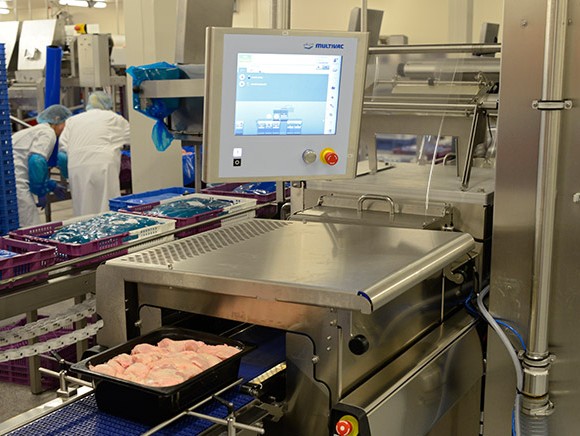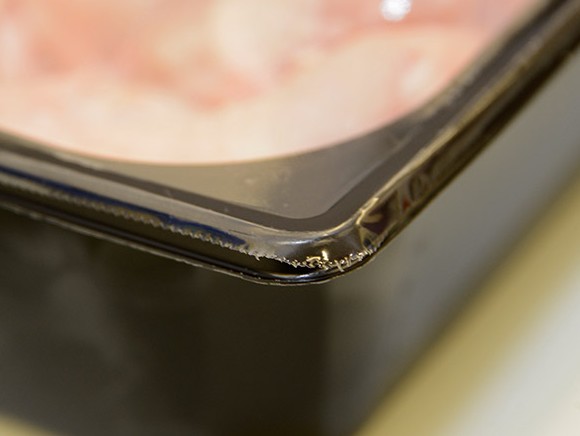
‘Can you supply chicken in modified atmosphere packaging?’ After being asked that by the market, Heijs Food Products ended up buying a new packaging machine. Hans van Norden from the poultry processing company explains: “At Multivac, they supply high-quality products and offer reliable after-sales service. They understand just how much our production process depends on the performance of their equipment.”
‘The chicken has a longer shelf life than in normal packaging’
“We wanted an ‘A-brand’ and it’s no coincidence that Multivac is the market leader,” comments Hans van Norden from the poultry processing company Heijs Food Products based in Hoogeveen. Multivac manufactures and supplies packaging machines for various sectors, including the food industry. Van Norden continues: “We process breast meat into all manner of products and supply it in any kind of packaging our customers want. The UK in particular is a large sales market for us. In addition to the foodservice sector, we also supply to customers such as McDonalds, Kentucky Fried Chicken and Marks and Spencer, for example. British consumers eat a lot of chicken and we expect to see an increase in specialised processing.”
The UK market is also where the growing demand has come from in recent years for chicken packaged in a modified atmosphere, which extends the shelf life of the chicken and generates more profit for foodservice customers. Van Norden: “That’s why we introduced modified atmosphere packaging (MAP) into our production process and purchased a new machine: the T600.” Hans Schalkwijk, Account Manager at Multivac, explains: “Modified atmosphere means that atmospheric air is removed from the packaging and a mixture of CO2 and N2 (nitrogen) is added. The application of this technique reduces the oxygen value to less than 0.5 percent, which inhibits the growth of microorganisms. As a result, the chicken has a longer shelf life than in normal packaging – providing it’s kept refrigerated of course.”
To pack chicken in modified atmosphere packaging, the T600 works with preformed plastic trays which are sealed in the machine. The trays containing the chicken enter the machine on a conveyor. Inside the machine, a gripper arm places the tray in the sealing station where the atmospheric air is extracted, replaced by the protective gas mix and then sealed with a top film. A label is then applied to the top film showing the slaughter date, the packaging date and the use-by date. The label also lists all the production and traceability-related data. As the trays roll off the conveyor, Van Norden comments: “The chicken that’s packaged today will be with foodservice customers in the UK by tomorrow morning.”
Schalkwijk: “The T600 is hygienically designed and is therefore easy to clean. At the same time it’s an eco-friendly machine with electrical drives and servomotors only, meaning that less compressed air – and hence less power – is required.” The installation of the T600 was the culmination of a complete replacement project lasting five years. In addition to the T600, Multivac had already supplied several thermoformers and – most recently – another machine for 9-part chicken. According to Schalkwijk, this machine park will now stand them in good stead for many years since the machines have a long lifetime.
In a production environment, there’s nothing more inconvenient than machine downtime. That’s why maintenance and a dedicated helpdesk are essential when purchasing machinery, and it all starts with a maintenance contract. Schalkwijk: “The maintenance frequency is influenced by the intensity of use, the production environment and the customer’s preference. Depending on those factors, we then recommend the customer to opt for once-yearly or twice-yearly servicing. That prevents technical problems and defects because it enables wear and tear on parts to be discovered at an early stage. Maintenance can also be carried out at the weekend, for example, if that’s the only time that the production line is switched off.”
Van Norden adds: “We’ve also got our own technical department which can resolve minor problems if necessary. The technical colleagues have been trained by Multivac and are able to keep the process running smoothly.”

If a problem should nevertheless occur, however, then the machine builder can be contacted 24 hours a day, 365 days a year and technicians are always on stand-by. Schalkwijk: “We always have a complete team available during working hours, spread throughout the Netherlands. On top of that, every technician spends a week on emergency call-out duty, round the clock, a couple of times each year. We don’t schedule him for regular work during that week.”
The technician doesn’t immediately head over to the client as soon as receiving a call, but instead analyses the problem and always tries to resolve it remotely by telephone first. “The problems are often relatively minor issues, such as a change in the settings,” says Schalkwijk. “In that case, the fastest way to solve the problem for the customer is by phone. At least 60 to 80 percent of the problems can be solved remotely. But if they can’t, a technician will be on site as quickly as possible.”
Schalkwijk himself also maintains contact with his customers. “I’ve spent a lot of time at Heijs over the past year, but that’s only normal when a new machine is being purchased. We decide on the right location for the machine together in line with the production environment. Not only the operators but also the managers must get to know the machine. There’s a settling-in period, during which we provide supervision and guidance. That’s all part of our service.”
Source: © Marten Sandburg